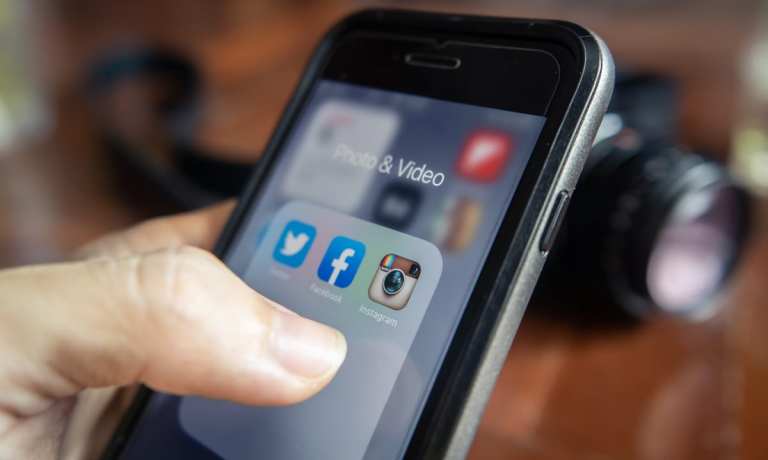
Investors will get a glimpse inside the increasingly complex world of the biggest social-media platform on Thursday (Oct. 29) when Facebook posts its third-quarter results after the market close. It’s a quarter that has seen Facebook benefit from increased use due to more people working and staying at home — but suffer from weaker revenues due to cash-strapped advertisers.
Facebook has also faced increased scrutiny during the quarter from Washington over claims that it needs to more extensively control the content that’s published on its site. Here’s a look at what Facebook is likely to report:
Q3 Expectations
According to Zacks Equity Research, Facebook’s Q3 earnings and revenues probably headed in opposite directions.
Analysts are looking for the company to report earnings of $1.92 per share, marking about a 10 percent decline from a year ago. But at the same time, Facebook’s revenue is pegged to have risen by 12 percent to $19.81 billion.
On average, analysts expect Facebook to report that its Daily Average Users (DAU) and Monthly Average Users (MAU) both rose about 10 percent vs. a year ago. MAUs are expected to top 2.7 billion and DAUs are likely to hit approximately 1.8 billion, Zacks reported.
Facebook Already Beat Estimates During A Tough Q2
Perhaps the most telling barometer of Facebook’s rebound over the past three months is the continued support of its stock by investors, who bid up the shares by 20 percent since the last earnings report. That’s more than double the bounce experience by the S&P 500 and Nasdaq Composite indexes.
And even though the second quarter marked the initial COVID-19 shutdowns’ depth, Facebook’s quarterly results for that period still beat analysts’ top and bottom predictions. The company saw revenue grow 11 percent to $18.69 billion, while earnings per share earnings hit $1.80, which were about 20 percent better than expected at the time.
Facebook’s Recent News
The social-media giant continued to develop its core business in the third quarter with the rollout of “Reels” on Instagram in response to fast-growing short video service TikTok. The firm also unveiled Facebook Campus, a new platform for college students and introduced free cloud gaming for Android users.
But among challenges that Facebook faced during the third quarter, its handling of news about the coronavirus and widespread U.S. social unrest brought the company lots of unwanted attention. Facebook also faced advertiser boycotts this past quarter over what critics claim is an insufficient approach to removing users’ hate speech from its site.
However, many of those boycotts have involved large advertisers like Adidas, Honda, Reebok and Verizon whereas Facebook gets lots of ad dollars from small and medium-sized businesses. Marketing-research firm Pathmatics recently reported that Facebook’s 100 largest advertisers only account for $4.2 billion, or 6 percent of the company’s roughly $70 billion a year in ad revenue, as per CNN.
The network added that Facebook has 8 million advertisers in total, and that said the last time Facebook confirmed data on large vs. small advertisers in 2019, Chief Operating Officer Sheryl Sandberg said the top 100 clients represented “less than 20%” of total ad revenues.
Still, the company also drew fire from both Democrats and Republicans during the latest quarter over the amount of allegedly false political information it allowed users to publish. MarketWatch reported that the campaign for former Vice President Joseph Biden fired off a letter to billionaire CEO Mark Zuckerberg that called Facebook a “tool to spread disinformation.”
Regulatory Review
Not only did Facebook see public criticism across the political spectrum, but it also faced antitrust attention over the past few months, as both the U.S. Federal Trade Commission and a congressional panel took aim at Big Tech’s alleged market dominance,
Reports also emerged in recent days that Facebook and 20 other Big Tech companies could be put on a “hit list” of companies the European Union antitrust regulators might target with injunctions and other means of tighter regulation.
On The Payments Front
The payments industry will be looking to hear updates on how Facebook’s efforts to make purchases and payments easier on its various platforms are progressing.
Last week, the company announced that its WhatsApp platform was introducing new services to enable businesses to sell directly within chats with customers. WhatsApp said it will also offer hosting services and other tools to make it easy for businesses to sell and users to shop.
“More than 175 million people every day message a WhatsApp business account,” WhatsApp said in announcing the move. “Our research shows people prefer to message a business to get help, and they’re more likely to make a purchase when they can do so.”
In July, the company also launched a payments tool called WhatsApp Pay in Brazil, where the app has 120 million users. It also partnered with Brazilian card operator Cielo on the effort.
After regulators temporarily shut the service down, the country’s central bank approved the new service as long it follows Brazil’s rules. WhatsApp is also awaiting final regulatory approval in India for a pending payments option that it plans to make available to its 400 million users there.
Facebook also announced earlier this month that it was adding shopping and payment features to Instagram’s Reels function and to IGTV, Instagram’s stand-alone video app for smartphones.
Those moves follow the introduction of the Instagram Shop on Instagram’s Explore page, which promises to make it easier to shop from brands and creators.